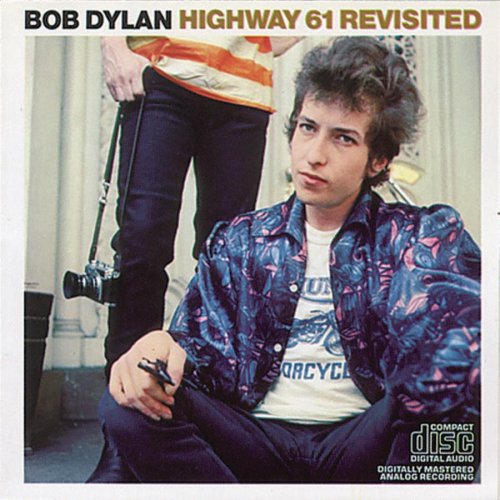Classic Song Analysis: “Like a Rolling Stone” (Dylan)
 There was much about “Like a Rolling Stone” that would have been considered innovative in 1965. The length of the song (over 6 minutes, rare in pop song world), and the subject matter (a somewhat cynical look at “Miss Lonely’s” financial demise, when most hits were much simpler love songs), made it a standout in its day. But it takes more than that to have a song declared the greatest song of all time (it sits in the no. 1 position on Rolling Stone’s list of “500 Greatest Songs Ever Written”). Melodic structure, and in particular how that melody interacts with the chord progression and establishes form, (not to mention Dylan’s iconic performance style), create something of remarkable depth and quality, a song that most would describe as the most influential popular song since the ’50s.
There was much about “Like a Rolling Stone” that would have been considered innovative in 1965. The length of the song (over 6 minutes, rare in pop song world), and the subject matter (a somewhat cynical look at “Miss Lonely’s” financial demise, when most hits were much simpler love songs), made it a standout in its day. But it takes more than that to have a song declared the greatest song of all time (it sits in the no. 1 position on Rolling Stone’s list of “500 Greatest Songs Ever Written”). Melodic structure, and in particular how that melody interacts with the chord progression and establishes form, (not to mention Dylan’s iconic performance style), create something of remarkable depth and quality, a song that most would describe as the most influential popular song since the ’50s.As is typical for many of Dylan’s most popular songs, the formal plan is a very simple verse-chorus design, starting with a short vamp-style intro, and featuring short connecting transitions between the end of each chorus and the start of the next verse. The unusual length of the song is more due to the complexity of the lyric than anything offered by the form. Like Cohen, Dylan prefers simple, uncomplicated melodies and harmonies as a vehicle for his outstandingly poignant text.
The lyric itself deserves its own close analysis, but to summarize, “Like a Rolling Stone” tells the story of a rich woman, “Miss Lonely”, who falls on hard times (“How does it feel/ To be without a home/ Like a complete unknown…“). The lyrics are at times cynical (“Now you don’t seem so proud…”), and at other times sympathetic (“When you got nothing, you got nothing to lose…”). And for certain, they were groundbreaking, innovative material for hit songs of their day.
Comments
Post a Comment